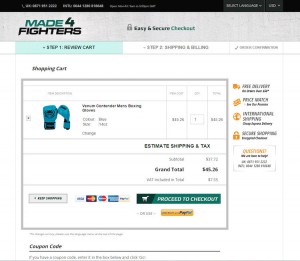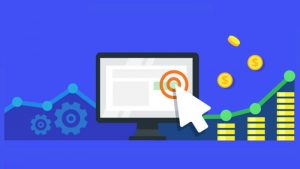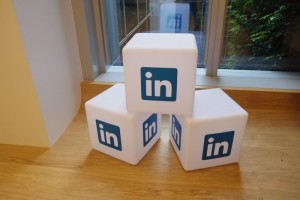Conversion optimization opportunities are typically expected from your shopping cart and checkout pages, but your product pages hold tremendous possibility for increased conversion rates. Optimizing product pages facilitates an enjoyable shopping environment that reaches a higher percentage of your site visitors. An optimized product page skillfully routes more traffic towards the checkout page and ultimately, to conversion.
We kick started our conversion optimization series off with 4 tips to build a strong homepage. In today’s post, we’ll spotlight 5 ways to create an effective, conversion-optimized product page.
Whether you sell retail products or subscription services, these five effective methods of optimization will help you create a product page that is designed to sell to your customers in a way that feels intuitive to your visitor.
1. Calculated Calls-to-Action
Guide users to conversion with clear, compelling directions.
A call-to-action may be a short and sweet piece of text, but it should pack a meaningful punch. CTA’s are the navigational seam your site visitor will travel to convert. Your site should be flowered with CTA’s that are strategically placed, compelling and clear.
A strategically placed call-to-action is intuitive. It may come at the end of an informative teaser for a product you want visitors to download before leaving your website, or it may come in the form of a simple button on your landing page inviting users to “Buy Now.”
Compelling calls-to-action come in a variety of forms, but the one thing they all have in common is a strong, actionable invitation to take a specific action. The CTA should follow a consequential design, providing the consumer everything they need to take the next step to engage with your business.
To deliver a clear call-to-action, you need a clearly defined conversion goal. If you want them to download a booklet about your products, make the link clearly identifiable and use text such as “Download Now” to emphasize the convenience factor. If you want them to make a purchase, your call-to-action may be the option to add something to a shopping cart.
2. Polish Your Product Page
Your product page needs to elicit a trustworthy, comfortable environment.
The most crucial aspect of optimizing any merchandise page is to ensure that the first content users see when they land on the product page is informative, actionable and reputable. Over half of visitors leave a webpage in less than 15 seconds – so, you need to ensure the information on your product page not only is easily digestible, but resonates, too!
An informative product page utilizes relevant images of the product, with informative product descriptions and features. An actionable product page creates a seamless experience for your user; intuitive, clear steps are pertinent at every stage, from selecting product preferences to adding the product to their shopping cart.
Customer reviews and ratings are a fantastic way to build a reputable product page. Don’t fear the consequence of negative reviews; “bad” reviews can provide helpful information to potential customers. 68% of consumers trust reviews more when they see both good and bad scores. Customer reviews reveal an authenticity to your products, beyond your provided product information, that you shouldn’t shy from.
Utilizing these components in your product page will create an environment where site visitors are comfortable and knowledgeable enough about the product to make a purchase.
3. Target Visitors with the Right Recommendation
Increase AOV while anticipating your shopper’s needs.
One of the best ways to optimize conversion rates is to include relevant suggestions for items related to the product on the page. Aligning product recommendations with your site visitor’s behavior is a tactful way to increase AOV.
Perfectly targeted recommendations increase the likelihood that customers will remain on your website after adding an item to their cart and provide a window for upselling more expensive items in a non-invasive way.
4. Mobile Optimization is a Must
Accommodate every site visitor.
Marketing research shows that consumers spend more time behind mobile screens than desktop devices. Accordingly, you should adopt a responsive design for your online store that makes it possible for visitors to view a version of your website that is tailored to fit any screen.
Mobile optimization makes it easier for consumers to shop while using their smartphones and tablets, which means that visitors are more likely to become customers. Mobile shoppers are also highly likely to become repeat customers of stores with responsive websites.
5. Measure Your Optimization Metrics
Instead of an entire product page overhaul, A/B test to optimize!
If you are currently making online sales, you already have valuable metrics at your disposal. Draw from current performance metrics to diagnose areas on your product pages to improve.
A/B testing is an effective way to get started implementing new strategies, while being able to track exactly which variables are the cause of any changes in performance metrics. Get started implementing an A/B test procedure with our best practices. Setting up your A/B tests properly will keep your conversion optimization journey effective.
These strategies for optimizing your conversion rates will help you create dynamic product pages that encourage visitors to engage with your business. Each strategy is effective in its own right, but a combination of all of them is the best way to use the sales funnel to your advantage.
Digital & Social Articles on Business 2 Community(68)







